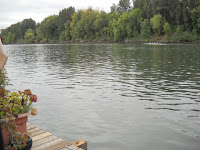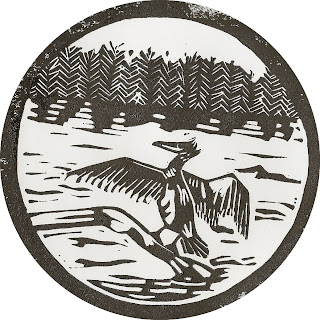Crew with wolf or dog hats Crew with prison stripes
I had house guests for the weekend and Saturday morning I was talking about how entertaining it is to live on the water. No kidding. On a typical day, amongst the craft going by are a few rowing sculls, coming from a boathouse just above the island bridge that belongs to a group called the Portland Boat Club.
This Saturday was an entertainment jackpot day. First, a couple of scullers came past. Then more. Then more. Then two-person sculls. Then more. Then more. Then four-person sculls. Then more. Then more. Then four-person sculls with coxswains (an extra person facing forward calling out directives). We also couldn't help but notice lots of them were wearing costumes: see above and below.
I, still in my pajamas, walked out on the deck and yelled out to a couple of guys in a double, asking them what was going on. They said it was a race, although they were headed downriver randomly and no one looked like they were racing.
After awhile they started coming back upriver, and this did look like a race -- moving in multiples and faster with seeming intent. I went out and started taking photos.
Today I looked on the web to see what this was about -- it seemed like every sculler in the Portland metropolitan area was rowing past. It was the Portland Boat Club's second annual HOTDog or Head of the Dog Regatta. It cost $20 a head. Here's a link to their website and some information about the group:
"About PBC
The Portland Boat Club is a group of dedicated rowers, mostly scullers, in Portland, Oregon. Up until 1994, we were the Portland Rowing Club, a revival of one of the oldest rowing clubs west of the Mississippi, but following a legal split from a houseboat moorage of that name, we are the Portland Boat Club. We offer our members the benefits of belonging to a competitive club. We offer camaraderie with a focus on improving sculling performance, use of club boats, as well as moorage for privately owned boats. The Portland Boat Club is a member club of USRowing."









































